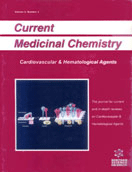Abstract
Type 1 receptors (AT1) for the peptide hormone angiotensin II play a crucial role in the cardiovascular homeostasis. In this regard, several selective, orally active non-peptide antagonists have been developed for the treatment of hypertension and congestive heart failure. Pre-clinically, they have been routinely tested for their ability to inhibit angiotensin II induced contraction of rabbit aorta strips. This led to the distinction between surmountable antagonists, which only produce a parallel rightward shift of the angiotensin II concentration- induced response curve, and insurmountable antagonists that also decrease the maximal response. The molecular mechanism that is responsible for insurmountable antagonism has been extensively investigated in Chinese Hamster Ovary cells transfected expressing the human AT1 receptor. These experiments revealed that all biphenyltetrazole-countering AT1 receptor antagonists are competitive with angiotensin II and that the insurmountable behaviour of some of them is related to the formation of a long lasting / tight binding state of the antagonist-receptor complex. This may contribute to their long lasting clinical effect. This paper also focuses on the influence of a number of methodological approaches used to study AT1 receptor antagonists on their observed in vitro receptor binding properties.
Keywords: angiotensin II, receptor, antagonist, competitive, surmountable, insurmountable, binding, pharmacology
 15
15













